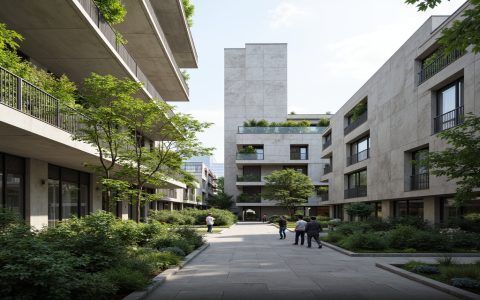Interior airport design is a critical discipline focused on creating environments that are efficient, secure, user-friendly, and reflective of a distinct identity. It extends beyond aesthetics to fundamentally shape the passenger journey, impacting everything from stress levels to commercial revenue.
Key Objectives in Airport Interior Design
- Passenger Experience Enhancement: Prioritizing comfort, reducing anxiety, and creating a welcoming atmosphere through thoughtful spatial planning, amenities, and ambiance.
- Operational Efficiency: Facilitating smooth passenger flow, intuitive wayfinding, and streamlined processes for check-in, security, and boarding. This minimizes congestion and delays.
- Security and Safety Integration: Seamlessly incorporating security measures and safety protocols into the design in a way that is effective yet unobtrusive, maintaining a sense of calm.
- Revenue Generation: Strategically planning and integrating retail, dining, and other commercial spaces to maximize non-aeronautical revenue while enhancing passenger convenience.
- Brand Identity and Sense of Place: Creating a unique environment that reflects the local culture, the airport's brand, or the national identity, making the airport a memorable gateway.
Core Design Principles
- Clarity and Intuition (Wayfinding): Utilizing clear, consistent signage, logical spatial layouts, visual cues (color, lighting, landmarks), and intuitive pathways to guide passengers effortlessly.
- Comfort and Well-being: Providing ample and varied seating options, optimal lighting (natural and artificial), good air quality, comfortable thermal conditions, and effective acoustic control.
- Flexibility and Adaptability: Designing spaces that can accommodate evolving passenger volumes, new technologies, changing security requirements, and future expansions with minimal disruption.
- Durability and Maintenance: Selecting robust, long-lasting materials and finishes that can withstand high traffic and are easy to clean and maintain, ensuring long-term aesthetic appeal and functionality.
- Inclusivity and Accessibility: Adhering to universal design principles to ensure the airport environment is accessible and usable by all passengers, including those with disabilities or special needs.
- Sustainability: Incorporating environmentally responsible practices, such as energy-efficient systems, use of sustainable and locally sourced materials, water conservation, and maximization of natural light.
Critical Design Elements
- Lighting: A strategic blend of natural daylight and artificial lighting to enhance visibility, create ambiance, define zones, and support wayfinding. Layered lighting solutions are key.
- Materials and Finishes: Selection based on durability, slip resistance, acoustic properties, ease of maintenance, and aesthetic contribution. Materials often include natural stone, engineered composites, durable textiles, and glass.
- Acoustics: Managing noise levels through sound-absorbing materials, strategic layout of noisy zones (e.g., food courts), and design features that mitigate sound propagation, especially in gate lounges and quiet zones.
- Seating: Providing diverse seating options, from lounge chairs to work-focused benches with power outlets, strategically placed to cater to different passenger needs (rest, work, waiting).
- Signage and Information Systems: Clear, legible, and consistently designed static and digital signage, often multilingual, integrated with Flight Information Display Systems (FIDS) for real-time updates.
- Commercial Integration: Thoughtful placement and design of retail, food and beverage outlets, and passenger service counters to be visible and accessible without obstructing primary circulation paths.
- Art and Biophilic Design: Incorporating artwork, installations, and elements of nature (plants, water features, natural views) to reduce stress, enhance the aesthetic environment, and create a distinct sense of place.
Ultimately, successful interior airport design masterfully balances functional demands with human-centric considerations. It transforms a utilitarian space into a pleasant and efficient part of the travel experience, contributing significantly to an airport's overall performance and reputation.







